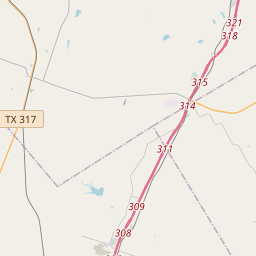Eddy Methodist Church
Historical marker location:






In 1868 a congregation of Methodist living in the Bell and Mclennan county region between Elm and Bull hide Creeks erected a simple sanctary at the site of a nearby cedar log toll bridge. The Rev. James Peeler, a Waco district Methodist Circuit preacher, served the Cedar Bridge Church congregation in 1873. The community of Eddy, known as Marvin when first settled about 1880, moved toward the railroad tracks extended through this area by the Missouri, Kansas, and Texas Railroad in1882. That year a building known as Sage Chapel was relocated from local rancher Charles Dunning's Land to Eddy for use by the Methodist and Baptist Congregation. Eddy Mothodest erected a new church building at this site in 1892.
This sancturary, built in 1912 through the efforts of the Rev. S.B. Knowles, is a good example of an Akron plan Church. It features elaborate German-,ade stained glass windows, a stamped metal ceiling, and Prairie School style infuences sch as overhanging eaves with brackets, a hipped roof,and tower.
Bruceville and Eddy Methodist Churches merged to form the Bruceville-Eddy United Methodist Churchin 1983. Renovation of the sanctuary in 1993 included placement of the Bruceville Church Bell in the Belfry
As one of the most visible programs of the Texas Historical Commission (THC), historical markers commemorate diverse topics in Texas history, including: the history and architecture of houses, commercial and public buildings, religious congregations, and military sites; events that changed the course of local and state history; and individuals who have made lasting contributions to the state, community organizations, and businesses.
The Alamo, a mission in San Antonio, is perhaps the most famous historical site in Texas. It was the site of a key battle during the Texas Revolution in 1836.
The county was officially established in 1850, named after Neil McLennan, a Scottish settler who played a significant role in the colonization of the region. The county's initial economy was primarily agricultural, with cotton, corn, and livestock becoming major industries. In 1870, the completion of the Waco Suspension Bridge, one of the first bridges to span the Brazos River, bolstered the county's growth and connected it to the expanding railroad network.
During the late 19th and early 20th centuries, McLennan County experienced periods of rapid growth and development. The city of Waco, the county seat, became a prosperous center for commerce, education, and culture. With the establishment of Baylor University in 1845 and the creation of the Texas Ranger Hall of Fame and Museum in 1968, Waco gained a reputation as an educational and historical hub. The county also played a significant role in the development of the Texas oil industry, as numerous oil fields were discovered and exploited in the early 20th century.
Despite its prosperous history, McLennan County faced challenges as well. It witnessed racial tensions and violence, particularly during the Civil Rights era. One of the county's most infamous events occurred in 1993 when an armed standoff between federal agents and the Branch Davidians religious sect resulted in a tragic fire at their compound near Waco, leaving many dead. However, the county has shown resilience, with ongoing efforts to address social issues and promote economic development, making it a vibrant and evolving community.
McLennan County Timeline
This timeline provides a glimpse into the major events and milestones that have shaped the history of McLennan County, Texas.
- 1837 - McLennan County is established as a county of the Republic of Texas
- 1849 - Waco, the county seat, is founded
- 1860s - McLennan County experiences rapid growth with the expansion of the cattle industry and arrival of the railroad
- 1874 - Baylor University is relocated to Waco
- 1886 - The Texas Cotton Palace Exposition is held in Waco to showcase the county's cotton industry
- 1916 - A tornado devastates downtown Waco, causing significant damage and loss of life
- 1930s - McLennan County suffers during the Great Depression, but also sees some economic improvements through New Deal programs
- 1951 - The Waco VA Hospital is established, providing medical care for veterans
- 1993 - The Branch Davidian standoff occurs in Waco, resulting in a tragic fire and loss of life
- 2015 - McLennan County celebrates its 150th anniversary